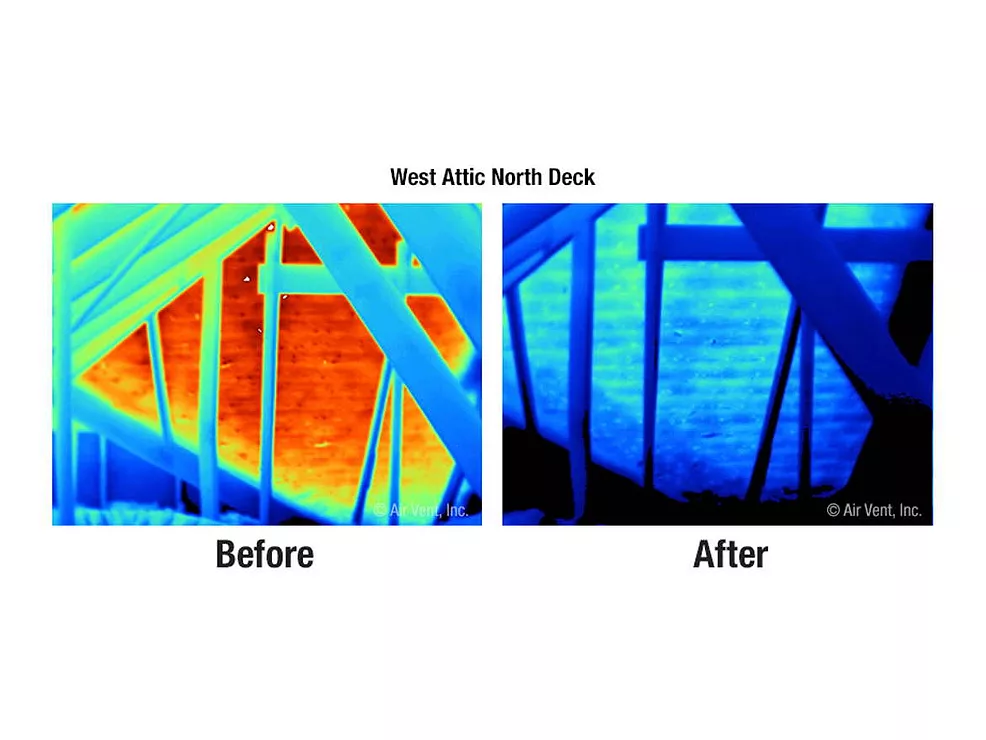Building Codes Mean Business

“Ventilation is one of the hot topics for any steep-slope roofing contractor,” says Mike Satran, president of Interstate Roofing in Portland, Ore. “Mold, energy savings and overall longevity of the roofing system are determined primarily by the effectiveness of the ventilation system. Building codes are in place to make sure the minimum ventilation requirements are met. But we believe that the codes are a minimum standard and it is important to always look at the project as a whole.”
Uniform Code
Building codes have not always been friendly to the contractor and they still vary drastically throughout the country. In 1993, however, the Model Code Organizations (MCO), which consisted of Building Officials and Code Administrators (BOCA), International Conference of Building Officials (ICBO) and Southern Building Code Congress International (SBCCI), agreed to work toward the ultimate goal of adopting a single code format. This unified effort has led to the International Code Council (ICC) master plan for one single model set of building, fire and life safety codes for the entire country. It wasn’t until this year that the goal has been realized with one uniform and less complex model code system. The organization is striving to eliminate irresponsible building procedures and promote a safe building environment for the public, as well as building professionals.
“The ICC is a 50,000-member nonprofit association dedicated to building safety. We develop the codes used to construct residential and commercial buildings, including homes and schools,” says Steve Daggers, a spokesperson for ICC. The majority of U.S. cities, counties and states that adopt codes choose building safety and fire prevention codes developed by the ICC. The organization is chartered in California and has an office in the Los Angeles area. There are nearly 300 ICC membership chapters spread throughout the country.
Ventilation is Key
But even with the new uniform codes, there is a high degree of education still necessary. According to Andy Swan, president of Blocksom & Co., the manufacturer of Roof Saver ridge vent, “The model codes specify the minimum requirement for ventilation. A given project may require more than the minimum. A framing crew responsible for the roof deck should be familiar with the slot requirements for the ridge vents that are installed. Everyone working on the roof needs to be working together in synchronization and aware of the building codes associated with the project.”Even with the uniform codes, they still vary significantly across the country. “If building professionals are unsure of the area’s building codes, they have the option of reviewing building codes at local jurisdictions,” says Satran.
For every part of the roofing application there are important building codes. As noted earlier, the hot spots for steep-slope application is ventilation. Often the ventilation requirements are not adhered to when installing a new roof. It is one of the most crucial elements, according to Satran. “Without proper ventilation the roof is in jeopardy. That is why the building codes are there to help us.”
Following building codes while installing ridge vents is key. The 1/300 and 1/150 ratios are important guidelines for calculating the minimum ventilation and translating that minimum into the linear feet or number of pieces of a given ventilation product to install. The 1/300 ratio means that one square foot of net free ventilation area is required for every 300 feet of attic footprint and applies to attics with a vapor barrier installed at the floor of the attic. The architect, builder or roofer divides the total square feet of attic footprint by 300. The answer is the total net free area required. For attics without a vapor barrier, use the 1/150 ratio or one square foot of net free area for every 150 square feet of attic footprint.
A second important design and installation concept is balancing the ventilation system. The codes require that more than half of the total net free area be installed at the soffit when installing a combination of soffit and ridge vents.
“Keep in mind that some climates or locations might demand more net free area. Code standards are the bare minimum but humidity and temperature fluctuate depending on the area,” says Swan. “A humid climate can generate a lot of moisture in the building, so contractors need to take that into consideration while designing and installing ventilation systems. Severe heat and cold climates require some judgment. We recently helped with a project in Alaska. The builder’s experience prompted him to design the ventilation system with four times the minimum net free area so the underside of the roof remains cold and he can be confident that ice dams will not be a problem.”
Take the Test
The ICC will be updating codes every three years, although the code development cycle is every 18 months. Code hearings are open to the public, so if attendees would like to make a change to a current code, they have the opportunity to express their concern at the hearing. “Anyone can come to the hearing, whether it is to suggest code changes or just to observe,” says Mike Pfieffer, vice president of codes and standards development at ICC.ICC also offers a contractor examination and code certification program. The contractor examination is a voluntary program that permits code enforcement and administration professionals to demonstrate their knowledge in various areas of code enforcement by a written or computerized, statistically validated examination. The ICC examinations are administered throughout the ICC membership area each January, March, May, July, September, and November. Candidates must register five weeks prior to the examination date. There are minimal fees for the tests. Exam results are then posted on the ICC’s Web site.
“People can get online and check the Web site to see if they passed; it’s a very simple, hassle-free method for them to view exam results,” says April Dison, ICC senior program coordinator. The written code certification test is offered six times a year on the second Saturday of every other month starting in January. Both written and computer tests must be taken at a proctored venue.
The code certification programs are far more expansive than roofing. They offer strong educational opportunities for contractors whether for ventilation or more diverse trades. Areas of certification include housing rehabilitation inspector, building inspector, one- and two-family dwelling inspector, zoning and property standards inspector, coastal construction and many more. Any individual in the construction industry should consider these exams to grasp a better understanding of building procedures.
“Most building inspectors don’t get on a roof to inspect it, but we inspect our work every day,” says Satran. “That is why we have been committed to educating our employees on not only following building codes but considering them the minimum expectation. Contractors need to understand net free ventilation and calculate the proper ventilation. At the end of every job, we inspect the roof the same as a building codes inspector; we give the final check list inspection to the homeowner.”
It is that type of commitment to not only following building codes, but also exceeding them, which offers safer, stronger and more energy-efficient roofing to the industry. Increased education may prevent future company loss and penalties, while preventing the construction of unsafe buildings.
Looking for a reprint of this article?
From high-res PDFs to custom plaques, order your copy today!







